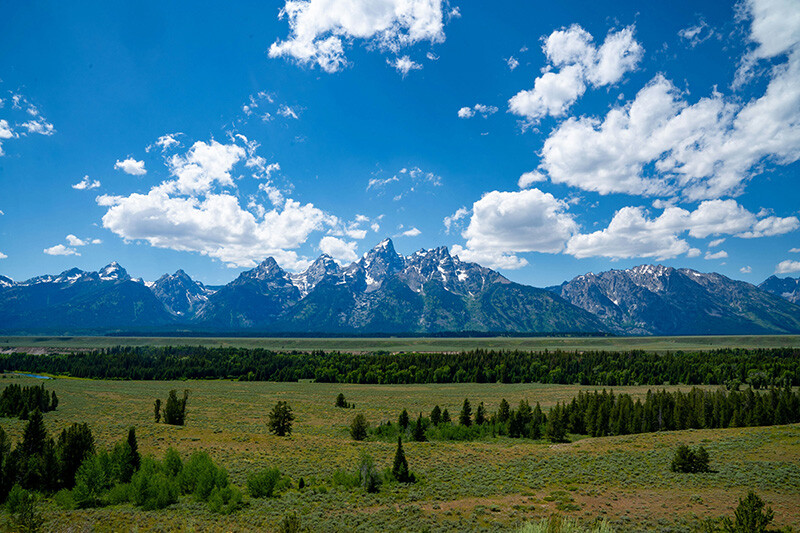From protecting natural resources to preserving our nation's history, public lands are an integral part of the American landscape. With incredible recreational opportunities and scenic beauty, many types of public land boost local economies through tourism. For private property owners nearby, this can be good news for land values as well as simple personal enjoyment.
Of course, this isn't always the case. Purchasing and owning nearby land comes with additional considerations for land use, development projects, and privacy. In this guide, we'll go over the basics of what public lands are along with key considerations for landowners and land transactions.
Contents
What Are Public Lands?
Types of Public Lands
How Public Lands Impact Property Ownership
Buying Property Near Public Lands
Where to Find Public Land Maps and Zoning Information
What Are Public Lands?
Definition of Public Lands
Public lands are owned and managed by government agencies on behalf of U.S. citizens. They're set aside for various purposes, like preserving natural beauty to provide recreational spaces and managing resources like timber and minerals.
Most federal public lands are managed by bureaus under the U.S. Department of the Interior or the U.S. Department of Agriculture, but public land can also be managed at the state or local level.
The Importance of Public Lands
Public lands safeguard ecosystems, protect wildlife habitats, and preserve natural resources for future generations. They're also hubs for recreation that boost local economies and enhance quality of life.
Types of Public Lands
National Parks
There are 63 National Parks in the United States. They prioritize conservation, protect cultural heritage, and offer high recreational value.
National Forests
Managed for multiple uses, National Forests balance conservation with activities like logging and recreation. The National Forest System covers 93 million acres and includes 154 designated national forests (and 20 national grasslands).
Bureau of Land Management (BLM) Lands
The BLM manages 245 million acres of public lands and 700 million acres of mineral estate with a focus on conservation and recreation.
Wildlife Refuges
The National Wildlife Refuge System protects and conserves wildlife and their habitats. Unsurprisingly, human activities are usually limited to minimize disturbance of these ecosystems. There are over 570 refuges across the nation.
Wilderness Areas
Wilderness areas cover over 111 million acres. These regions are preserved in their natural condition, restricting motorized vehicles and permanent structures to maintain ecological integrity.
National Monuments
There are 134 National Monuments in the United States. Designated by either the President or Congress, they protect significant natural, cultural, or historical sites on federal land.
National Recreation Areas
The United States has 40 National Recreation Areas, offering outdoor activities like hiking, boating, and camping to enhance quality of life through connection to nature.
National Seashores and Lakeshores
The National Park Service manages 10 National Seashores and 4 National Lakeshores (all located on the Great Lakes), protecting coastlines and providing public access to beaches.
National Rivers
There are over 200 National Wild and Scenic Rivers in the United States that preserve outstanding natural beauty and recreation opportunities.
State Parks and Forests
Managed by individual states, State Parks and Forests collectively cover millions of acres across the United States. They offer recreational activities and conserve natural resources, wildlife habitats, and historical sites within state boundaries.
How Public Lands Impact Property Ownership
Proximity to Public Lands and Property Value
Being near public lands can significantly affect property prices. In many cases, properties adjacent to National Parks or Forests see an increase in value due to scenic views and recreational opportunities. However, there can be downsides—like increased tourism leading to privacy concerns or stricter zoning laws limiting property modifications.
These factors depend on local market demand and the type of public land involved, so the effect on value can vary from one region to another.
Landowner Rights and Public Land Access
If your property borders public lands, easements and public access paths might cross your land. This can affect your privacy and how you use your property.
These aren't automatically imposed. Easements typically require formal agreements or are established by historical precedent. A title company, real estate attorney, or your local county recorder can help you determine if easements exist on your property.
Buying Property Near Public Lands
Purchasing property near public lands comes with its own set of considerations. Zoning laws may be more restrictive, and environmental regulations could limit how you develop the land.
On the flip side, being close to a popular destination may lead to land appreciation or offer opportunities to make additional income off your land. For example, land near a National Park could have the potential for ecotourism, like campsites or guided tours.
Like with any land purchase, make sure the property you're considering aligns with your goals and work with an experienced land agent, who understands the regional market.
Where to Find Public Land Maps and Zoning Information
Government databases like the U.S. Geological Survey provide detailed public land maps that are free to use. Zoning information can often be obtained from your local county offices or planning departments. Depending on the county, you may be able to find these maps online, or you may need to make an in-person visit.
If you're a land professional who is constantly jumping between mapping platforms and public resources, consider Acres.com for a streamlined, all-in-one solution. Not only can you instantly map public lands, you can also access other mapping tools, the latest land sales data, and more in one place.
Final Thoughts
Public lands are more than vast stretches of untouched wilderness—they're the backbone of our nation's conservation, recreation, and resource use. They can also significantly impact property ownership, influence land transactions, and open doors (or close them) for development projects.
Make sure you work closely with experienced land professionals and have access to the data and maps you need to make informed decisions when purchasing property near public lands.
